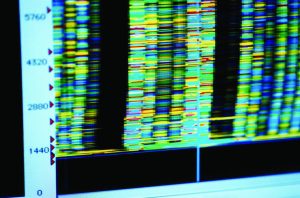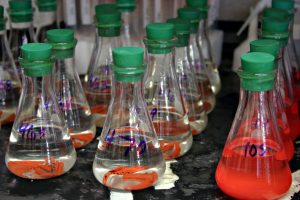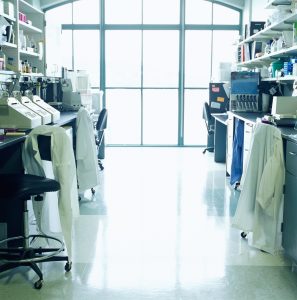The annual Society for Laboratory Automation and Screening (SLAS) Conference in February, was the scene of many exciting new product launches. PerkinElmer highlighted the high-throughput NEXTprep-Mag Automated cfDNA isolation kit for extraction of cell-free DNA (cfDNA) from plasma or serum. This has many applications for non-invasive prenatal testing (NIPT) and oncology. Thermo Fisher also introduced a cfDNA extraction solution incorporating several of its tools, the MagMAX Cell-Free DNA Isolation kit and protocols, as well as Analytik Jena’s CyBio FeliX liquid handler. The company also launched the Thermo Scientific Cytomat SkyLine microplate storage and delivery system, claiming the highest capacity at 728 microplates. The plate separation technology allows plates and plate lids to be handled separately. Corning Life Sciences launched a compact Cell Counter, weighing only 2 lbs., which enables cell counting using standard reusable hemocytometers or disposable slides. Keith R. Olson, director of CLS Business Operations, mentioned the addition is part of Corning’s efforts to offer researchers a complete workflow for cell culture. Abcam and Molecular Devices announced a collaboration at the show. Abcam will provide its CatchPoint SimpleStep ELISA kits optimized for use with Molecular Devices’ multimode plate readers. This is one in a series of kits the companies plan to launch and expands Abcam’s ELISA kits from colorimetric to fluorescent detection.
Next up, we travelled to The Pittsburgh Conference on Analytical Chemistry and Applied Spectroscopy, commonly known as PITTCON, the annual conference on laboratory science. This March, several companies took the opportunity to unveil new, cutting-edge products. Malvern PANalytical showed its Claisse Le Doser-12 sample preparation system, which weighs and dispenses flux for up to 12 samples for fusion preparations, providing time savings over the existing single-sample Le Doser. Continuing with the theme of saving time, Sirius Automation introduced its MiniTasker for everyday lab tasks, such as analytical weighing, sample ID, sorting, dilutions, standard preparation and aliquoting. With times of 3 sec/sample for sorting and 6 sec/sample for weighing, this small footprint system can host up to 20 microplate racks. Weighing materials was also made easier with Adam Equipment’s Equinox balance series equipped with a three thousand item database and a touch screen. Equally as advanced was the liquid handling system introduced by United Scientific Supplies. The Emerald is an ISO certified electronic burette that features three different dispensing speeds, including high-accuracy drop-wise dispensing. APIX Analytics presented the Chrompix 2, a miniaturized GC system with 4 modular inlets that allow the running of 4 different samples simultaneously with 4 different carrier gases. A typical application for this system is the high-throughput analysis of natural and industrial gases. An effort to decrease waste while using chromatography became evident with the product release of Axcend’s portable nanoLC system. The compact system has a flow rate of 100 nL–10 µL per minute, which generates negligible waste and consumes less solvent. Shimadzu Scientific Instruments released the Nexera Mikros Microflow LC-MS/MS with an enhanced sensitivity due to a column with a smaller diameter. The instrument also allows for reduced mobile phase consumption and less waste. Some technology released at PITTCON even could be used outside of a laboratory; SE International introduced the Radiation Alert Monitor 1000. This handheld portable radiation monitoring device can detect alpha, beta, gamma and X-rays with high sensitivity. The device is equipped with a Bluetooth connection, and is suitable for both lab settings and in-field industrial applications. Pittcon showed the science community truly how efficient spectrometry and analysis tools have become, in addition to providing the foundation for related instruments in the future.
In April we headed to Europe for Analytica – the renowned conference featuring many suppliers and researchers from around the world. Elementar described a new product to replace their existing vario microcube elemental analyzer. The new Unicube is a combustion instrument for the measurement of carbon, hydrogen, nitrogen and sulfur. The system is designed for microanalysis, with samples under 1 g in mass, and operation is much quieter than competitive products. BISCHOFF Chromatography introduced a new format for its established “build your own column” POPLC line of segmented columns for mixing multiple chromatographic chemistries in a single run to optimize separation. Lastly, Eppendorf introduced a new solution for dispensing extremely viscous liquids, such as honey or personal care products. The new ViscoTip is a 10 mL consumable with a wider bore to accommodate more viscous substances. This unique solution will be very helpful for certain customers who formerly had to resort to laborious weight-based dispensing of these materials.

April was a busy month, as the American Association of Cancer Research Conference was also held in Chicago, Illinois. Being one of the most important gatherings in oncology, much new technology was presented to optimize cancer research. Multiple genomic techniques were presented that are very useful in analyzing genetic aspects of cancer. Thermo Fisher presented the NGS-based Oncomine Childhood Cancer Research Assay, developed with the Children’s Hospital of Los Angeles. It targets the unique mutations associated with childhood cancers and is the first assay to detect RNA gene fusions and DNA mutations simultaneously. Additionally, 10x Genomics announced the launch of its Chromium Single Cell CNV Solution. Offering a scalable, high-throughput method for parallel profiling of single-cell genomes, the Single Cell CNV Solution is the latest addition to the 10x product portfolio. These products use Chromium Controller instruments to characterize the genomic landscapes of thousands of individual cells. NanoString Technologies announced the release of the Breast Cancer 360 (BC360) gene expression panel for its nCounter system. Encompassing over 700 genes and biological signatures including breast cancer subtype classification, key pathway analysis, and tumor inflammation, the BC360 panel enables researchers to gain an understanding of the breast cancer microenvironment, tumor heterogeneity, immune response and more. Imaging during cancer analysis was also greatly enhanced with the introduction of several new products. Greiner Bio-One exhibited Nano3D Biosciences’ products at the show. Nano3D utilizes magnetic 3D cell culture technology to form 3D cell models in vitro. Fluidigm highlighted multiple systems, including the Hyperion Imaging System for imaging mass cytometry. The system enables users to simultaneously visualize 4 to 37 proteins, transcending the current capabilities of fluorescent IHC. Forming experimental tumor models will now also be greatly simplified with the 3D Hubiogel, a predictive fully-human microtumor assay platform from LifeNet Health. Hubiogel is a growth factor–free, non-denatured extracelluar matrix (ECM) derived from human amnions. This ECM supports the generation of microtumors which translate into 3D tumor assay models. With the advent of this new and exciting cancer research technology, it will be only a matter of time before we develop formidable defenses against a variety of cancers.
Finally, this month we went to the American Society for Mass Spectrometry Conference in June. Citing the statistic that 75% of lab managers say maintenance and downtime is their biggest source of frustration, Agilent Technologies discussed new “innovations with purpose” that would cut down on maintenance time, particularly the Ultivo LC/MS. In fact, it was pointed out that regular maintenance on the Ultivo takes about an hour, compared to nine hours for other MS systems. Similarly, Bruker made it a point to emphasize the importance of speed, particularly in medicinal chemistry. To that end, the company’s signature product introduction was the scimaX magnetic resonance MS (MRMS), which is designed to be ideal for applications such as MALDI imaging, metabolomics, clinical phenomics and petroleomics. The scimaX is able to handle up to 200 samples a day. Just this week, June 27th, Agilent Technologies also launched a new range of probes to interpret gene expression data from fluorescent and chromogenic in situ hybridization (FISH and CISH), including EBER, Kappa, and Lambda mRNA probes. Agilent expects the new probes to help drive oligonucleotide-based in situ hybridization into more research labs. This technique allows scientists to measure gene expression in the context of cells within an organism’s tissues.
Have you seen a new product at a conference that your colleagues should know about? Post your review here in the comments section!
Copyright © 2018 scienceboard.net









